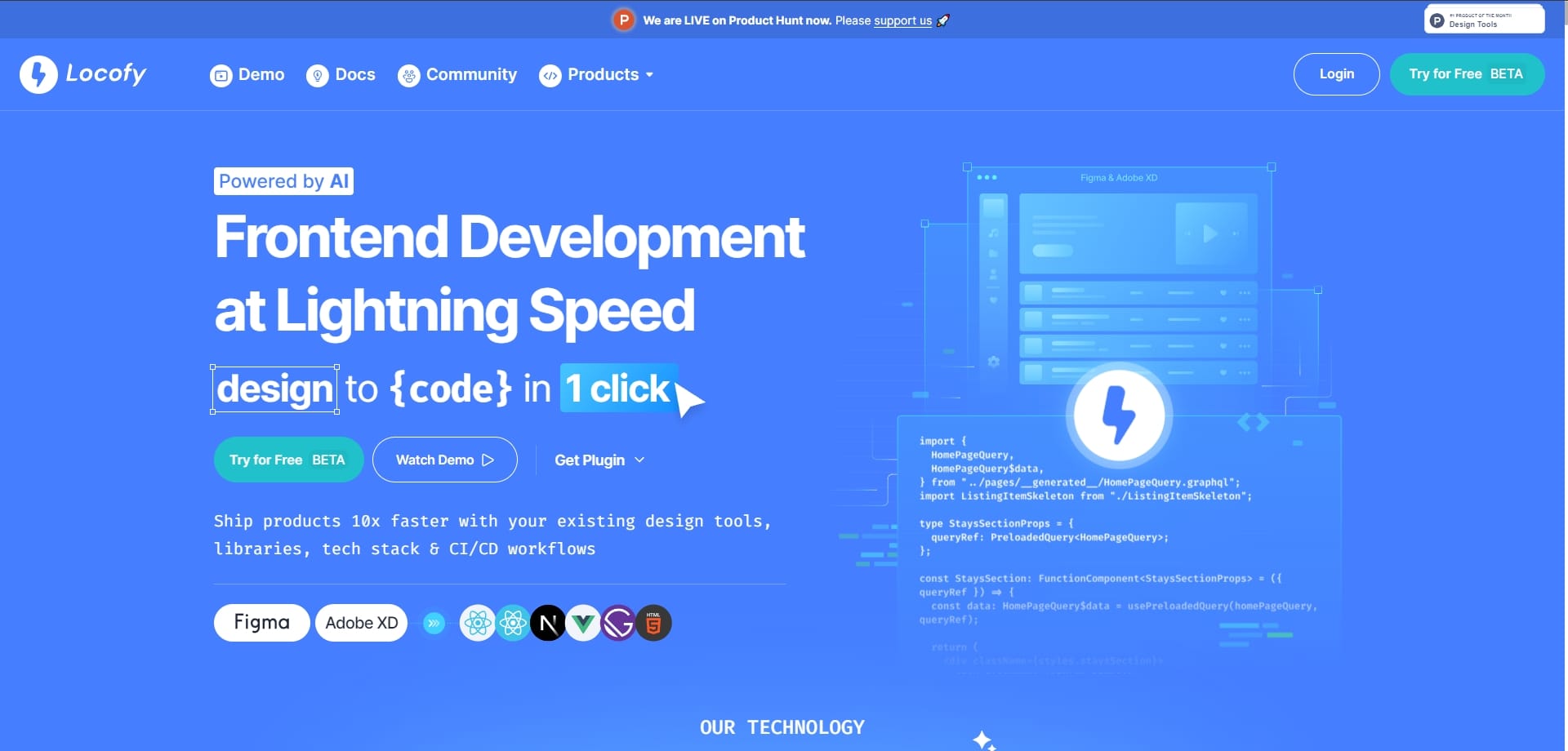In the ever-evolving landscape of web development, the gap between design and code has long been a challenge, often requiring extensive collaboration between designers and developers to bring visions to life. Enter Locofy Lightning, a revolutionary tool introduced by Honey Mittal and the team at Locofy.ai, which promises to bridge this gap with unprecedented efficiency. Leveraging the power of LocoAI's Large Design Models (LDMs), Locofy Lightning transforms Figma designs into high-quality, production-ready frontend code in just one click. This innovation is not just a step forward in design-to-code conversion; it's a leap towards a future where the creation of responsive, interactive designs and reusable code components is as straightforward as brewing a cup of coffee.
Locofy Lightning's appeal lies in its ability to automate the most labor-intensive aspects of web development. Powered by machine learning and heuristic models trained on millions of designs and web products, it optimizes designs for responsiveness and interactivity, tags interactive elements, and generates clean, scalable code complete with friendly class names. This process not only saves developers and designers countless hours but also ensures that the transition from design to code is seamless and devoid of the usual friction points. Moreover, the tool's integration with GitHub and IDEs like VS Code further streamlines the workflow, making it easier for teams to collaborate and iterate on their projects.
What sets Locofy Lightning apart from other design-to-code tools is its focus on quality and usability. The AI doesn't just convert designs into code; it optimizes them, ensuring that the output is not only functional but also adheres to best practices in web development. The ability to review and fine-tune the AI's decisions allows developers to maintain control over the final product, ensuring that the code meets their standards and requirements. Additionally, the introduction of smart class naming and the provision of reusable code components with props highlight Locofy Lightning's commitment to producing code that is not just functional but also maintainable and scalable.
In conclusion, Locofy Lightning by Locofy.ai represents a significant milestone in the field of web development, offering a solution that is as innovative as it is necessary. By harnessing the power of AI to eliminate the barriers between design and code, Locofy Lightning enables developers and designers to focus on what truly matters—creating exceptional web experiences. As the tool enters its beta phase, with support for a range of frameworks including React, Next.js, Vue.js, Gatsby, and HTML-CSS, it's clear that Locofy Lightning is not just changing how websites are built; it's redefining the future of frontend development.


